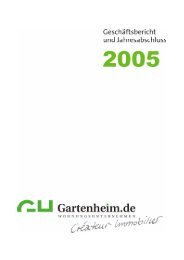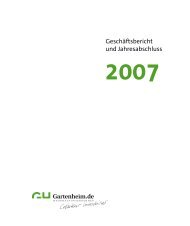analysis of the influences of solar radiation and façade glazing ...
analysis of the influences of solar radiation and façade glazing ...
analysis of the influences of solar radiation and façade glazing ...
You also want an ePaper? Increase the reach of your titles
YUMPU automatically turns print PDFs into web optimized ePapers that Google loves.
1.2 Background <strong>and</strong> literature review 25<br />
Fig. 1.3 presents <strong>the</strong> best location <strong>of</strong> insulation inside a ro<strong>of</strong>.<br />
glass wool<br />
concrete block<br />
glass wool<br />
concrete block<br />
glass wool<br />
Fig. 1.3: Configuration <strong>of</strong> insulation selected by Ozel <strong>and</strong> Pihtili (2007) as <strong>the</strong> best solution.<br />
Dombayci <strong>and</strong> co-workers (Dombayci, et al., 2006) investigated <strong>the</strong> optimization <strong>of</strong><br />
external wall insulation thickness for Denizli (southwestern Turkey) wea<strong>the</strong>r conditions.<br />
The effects <strong>of</strong> <strong>the</strong> energy source types (coal, natural gas, LPG, fuel oil, electricity) on<br />
energy savings <strong>and</strong> <strong>the</strong> use <strong>of</strong> different insulation materials (exp<strong>and</strong>ed polystyrene, rock<br />
wool) were analyzed. The difference between <strong>the</strong> buildings’ heating costs, with <strong>and</strong><br />
without <strong>the</strong> insulation <strong>of</strong> external walls, was used in a life-cycle cost <strong>analysis</strong> (LCCA).<br />
Results <strong>of</strong> <strong>the</strong> calculations revealed that <strong>the</strong> life cycle savings are $ 14.09 per square metre<br />
<strong>of</strong> wall surface area <strong>and</strong> a very short payback period <strong>of</strong> 1.43 years for <strong>the</strong> optimum<br />
insulation-thickness. These results were obtained with coal as <strong>the</strong> energy source <strong>and</strong><br />
exp<strong>and</strong>ed polystyrene as <strong>the</strong> insulating material.<br />
Khaled (Khaled, 2003) comprised two types <strong>of</strong> ro<strong>of</strong> insulation (polystyrene <strong>and</strong> fiberglass)<br />
for warm <strong>and</strong> cold climate conditions. Energy <strong>analysis</strong> was carried out for a 108 m 2 house<br />
in two USA locations: College Station (Texas) <strong>and</strong> Minneapolis (Minnesota). The<br />
RENCON simulation program (Degelman, et al., 1991) was used to determine annual<br />
heating <strong>and</strong> cooling energy consumption. Six different insulation resistance levels <strong>of</strong> <strong>the</strong><br />
ro<strong>of</strong> (R5, R10, R15, R20, R25, R30) were examined. In Khaled’s opinion, <strong>the</strong> most costeffective<br />
<strong>the</strong>rmal resistance for polystyrene is R5 <strong>and</strong> for fiberglass is R10. Besides this,<br />
<strong>the</strong> author remarked that <strong>the</strong> payback time <strong>of</strong> using insulation in a cold climate is shorter<br />
than that <strong>of</strong> a warm climate <strong>and</strong> that <strong>the</strong> best solution for <strong>the</strong>rmal insulation design is <strong>the</strong><br />
use <strong>of</strong> a life-cycle cost <strong>analysis</strong> ra<strong>the</strong>r than <strong>the</strong> construction budget limitation.<br />
The problem concerning <strong>the</strong> best insulation level <strong>of</strong> <strong>the</strong> envelope <strong>of</strong> new residential<br />
buildings in 6 Italian climatic zones was studied by Lollini (Lollini, et al., 2006).<br />
Economical <strong>analysis</strong> was based on two main parameters <strong>of</strong> investment efficiency: <strong>the</strong> net<br />
present value (NPV) <strong>and</strong> <strong>the</strong> payback rate (PBR). The methodology used in this project<br />
included <strong>the</strong> following factors: calculation <strong>of</strong> <strong>the</strong> optimal insulation thickness, analyses <strong>of</strong><br />
market <strong>and</strong> cost, energy calculation <strong>of</strong> <strong>the</strong> reference buildings, calculation for different





